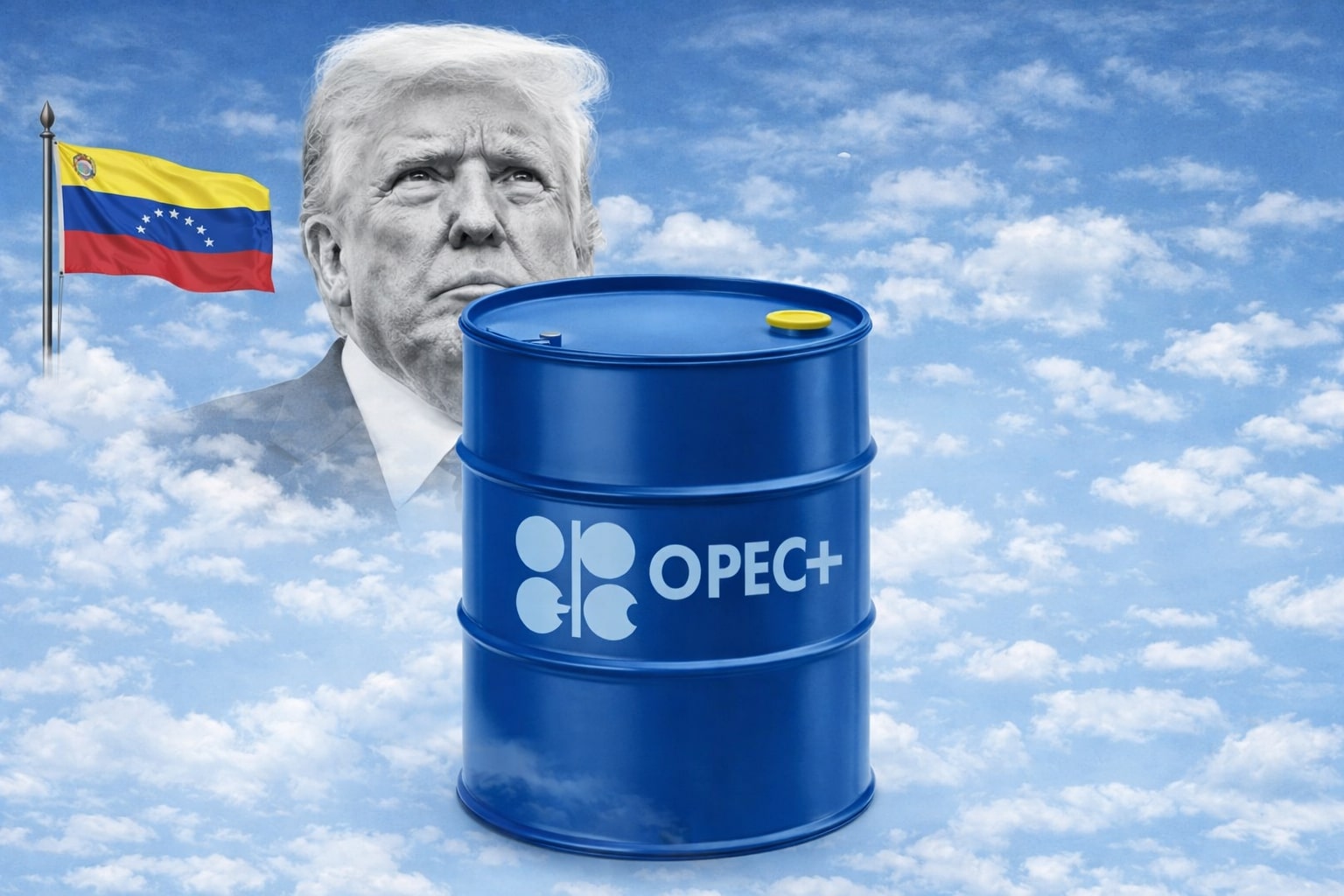
Oil Prices Surge as U.S.-China Trade Deal Eases Tensions - What’s Driving WTI and Brent Crude Prices?
WTI crude oil hits $62.93 while Brent rises to $65.79. Could this trade breakthrough signal the start of a sustained rally? | That's TradingNEWS
Oil Price Surge: WTI and Brent React to US-China Trade Breakthrough
West Texas Intermediate (WTI) crude oil price has surged, climbing to $62.93, a 3.13% increase, early in Monday’s trading session. This surge comes after the United States and China agreed to temporarily reduce tariffs on each other’s goods, easing global trade tensions. In a similar move, Brent crude oil also experienced a rise, trading at $65.79, up by 2.93% on the day. This marks a significant rally in both oil benchmarks, which have been influenced by easing concerns around global economic risks, such as trade wars and oil supply disruptions.
WTI Crude: Trading Above $60 Amid Global Optimism
WTI crude oil prices had previously been stagnant, trading at $60.68, but the agreement between the two largest oil-consuming nations has breathed new life into the market. WTI is now eyeing key resistance levels at $63.55, which will be crucial in determining whether the bullish momentum continues or if the market faces a pullback. The market sentiment shifted positively after the U.S. and China agreed to a 90-day tariff pause, which included slashing reciprocal tariffs by more than 100 percentage points, bringing U.S. tariffs on Chinese goods down to 30%, from 145%. While this deal is temporary, it has injected optimism into the global oil markets.
Brent Crude Price Reaction to U.S.-China Trade Deal
Brent crude oil, the international benchmark, saw a steady climb to $65.79, marking a 2.93% gain. This comes in the wake of the announcement that the U.S. and China would ease trade tensions, which provided relief to commodity markets, particularly oil. Analysts are now eyeing the $65 level as a key resistance zone, with the possibility of further rallies if these tariffs are not reinstated after the 90-day period. With the potential resolution of the U.S.-China trade spat, Brent crude might be headed for a test of $69, but it remains to be seen if this is the peak of optimism in the markets.
China’s Strategic Stockpiling of Oil and Its Impact on Prices
Despite a temporary ceasefire in trade hostilities, China has been increasing its oil imports aggressively, although the rise in demand is not necessarily tied to immediate consumer need. China's crude imports surged by 7.5% year-on-year in April to 11.69 million barrels per day (bpd), largely driven by refiners seeking to build strategic reserves. Chinese imports of oil, particularly from Iran and Russia, have been significant, rebounding as sanctions on these nations remain a major concern for global oil supply stability. Analysts indicate that China’s refiners are stockpiling oil due to uncertainties surrounding sanctioned crude supplies and potential global supply disruptions, exacerbated by geopolitical factors.
Impact of U.S. Sanctions and Rising Oil Inventories in China
China's accelerated oil imports in March and April, totaling 12 million bpd in March, reflect this trend of stockpiling rather than immediate demand. The increasing tensions around U.S. sanctions and concerns about future supply constraints have made Chinese majors take proactive measures, significantly boosting their domestic crude reserves. The pace of stockpiling was substantial, with an average build of 1.74 million bpd in March alone. As China continues its strategy of stockpiling amid declining oil prices, this could significantly influence the global oil supply and pricing dynamics in the coming quarters, especially with further storage capacity remaining.
WTI and Brent’s Price Movements Amid Trade Deals and Tariff Easing
Increased optimism surrounding the U.S.-China trade talks sent both WTI and Brent prices climbing on Monday. Brent crude traded at $65.94, up by 3.18%, as news of the tariff deal sent pro-cyclical commodities soaring. WTI, benefiting from this positive sentiment, jumped by 3.38%, trading at $63.08. These moves signal growing confidence among market participants that the worst of the trade war may be behind us, with hopes of stronger global demand and fewer trade disruptions. However, while the current rally is positive, market participants are cautious, wondering if this uptick represents peak optimism for oil, or if a more prolonged rally is underway.
Critical Resistance and Support Levels for Oil Prices
For both WTI and Brent crude, market participants will focus on the key resistance levels around $65 for Brent and $63.55 for WTI. These levels represent significant barriers to further price movements. If WTI can break through the $63.55 mark, it could potentially head toward $64.70, with $65 acting as a strong resistance point. On the downside, WTI has a solid support level around $60, a psychological barrier that has supported prices in the past. Should prices dip below $60, it could signal a shift in market sentiment, potentially leading to further losses.
Market Outlook: U.S. and China’s Trade Deal and Its Effect on Oil Prices
The news of the U.S.-China trade deal comes at a critical juncture for oil prices, with global trade tensions having taken a toll on the market. This agreement to temporarily ease tariffs has boosted oil prices, but the true impact remains to be seen once the 90-day pause expires. The ongoing uncertainty around how the U.S. and China will handle future economic relations and the potential for new tariffs once the pause ends will continue to weigh on the market. Analysts are keeping a close watch on how oil prices react to these changing dynamics, with potential resistance around the $65 level for Brent and $63.55 for WTI.
China’s Stockpiling Strategy and Global Oil Price Dynamics
China’s strategic stockpiling of crude oil is poised to continue influencing global oil prices, especially as refiners ramp up oil imports to fill their tanks. Despite the optimism surrounding the U.S.-China trade deal, China’s actions are driving demand for oil, but not necessarily due to increased consumption. This behavior could lead to sustained price pressure on oil as stockpiled oil finds its way into the market in the future. For now, the global oil markets remain optimistic about the ongoing tariff discussions and the possibility of continued supply stability.
Final Thoughts on Oil Price Movement and Global Economic Impact
As oil prices continue to react to the evolving trade relationship between the U.S. and China, it’s essential to monitor key price points and broader geopolitical events. With significant support for WTI at $60 and potential resistance above $63, the trajectory for both WTI and Brent crude remains in flux. Additionally, the persistent stockpiling activities in China, amid the uncertainty created by U.S. sanctions, will continue to play a pivotal role in shaping oil price movements. The bullish outlook for oil, fueled by easing trade tensions and robust stockpiling, may persist if global economic conditions improve and supply disruptions remain minimal.
That's TradingNEWS
Read More
-
DGRO ETF Price: Is DGRO at $69.17 Still the Better Dividend-Growth Bet?
17.12.2025 · TradingNEWS ArchiveStocks
-
XRP Price Stuck Below $2 As XRPI at $10.74 and XRPR at $15.26 Ride $1B+ ETF Inflows
17.12.2025 · TradingNEWS ArchiveCrypto
-
Natural Gas Price Forecast - NG=F Steady Near $4 as TTF Jumps on Colder Forecasts and LNG Outage Risk
17.12.2025 · TradingNEWS ArchiveCommodities
-
USD/JPY Price Forecast: USDJPY=X 155.50 Pivot Before BoJ Hike and US CPI
17.12.2025 · TradingNEWS ArchiveForex



















